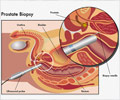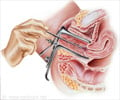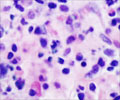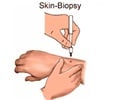A new study has found that most patients undergoing biopsy of the small intestine do not have the recommended number of samples to diagnose celiac disease.

"Celiac disease can affect the small intestine in a patchy distribution, and so just one or two biopsy samples could potentially miss the evidence of the disease," said lead author Benjamin Lebwohl, MD, MS, a gastroenterologist at the Celiac Disease Center at Columbia University Medical Center, in New York. Dr. Lebwohl and co-authors aimed to measure the practice of small intestinal biopsy in the United States. The Caris pathology database consists of specimens submitted by gastroenterologists from 43 states as well as Puerto Rico and the District of Columbia. The team also compared the diagnosis rate among patients who had at least four specimens submitted, in accordance with guidelines.
The investigators identified 132,352 individuals who underwent biopsy between 2006 and 2009, for a variety of medical indications, including diarrhea, abdominal pain, esophageal reflux, and anemia. Only 35 percent of this group had at least four specimens submitted, and the most common number of specimens submitted was two. But adhering to the recommendation of submitting at least four specimens more than doubled the diagnosis rate of celiac disease.
Even when physicians indicated that they were suspicious of celiac disease (e.g., when patients had positive celiac disease blood tests), fewer than 40 percent of patients had at least four specimens submitted; the diagnosis was increased sevenfold when the guidelines were followed.
"The process of increasing the number of specimens from two to four takes approximately one extra minute during endoscopy," said Dr. Lebwohl. Given the high incremental yield of submitting at least four specimens, taking this extra minute appears to be justified.
"In this study we identified just one of the factors contributing to the high rate of under-diagnosis of celiac disease in the United States. We plan on studying other physician-related factors that may also be operative," said Dr. Peter Green, Director of the Celiac Center Columbia University Medical Center, who was also an author on the paper.
Advertisement
Source-Eurekalert















